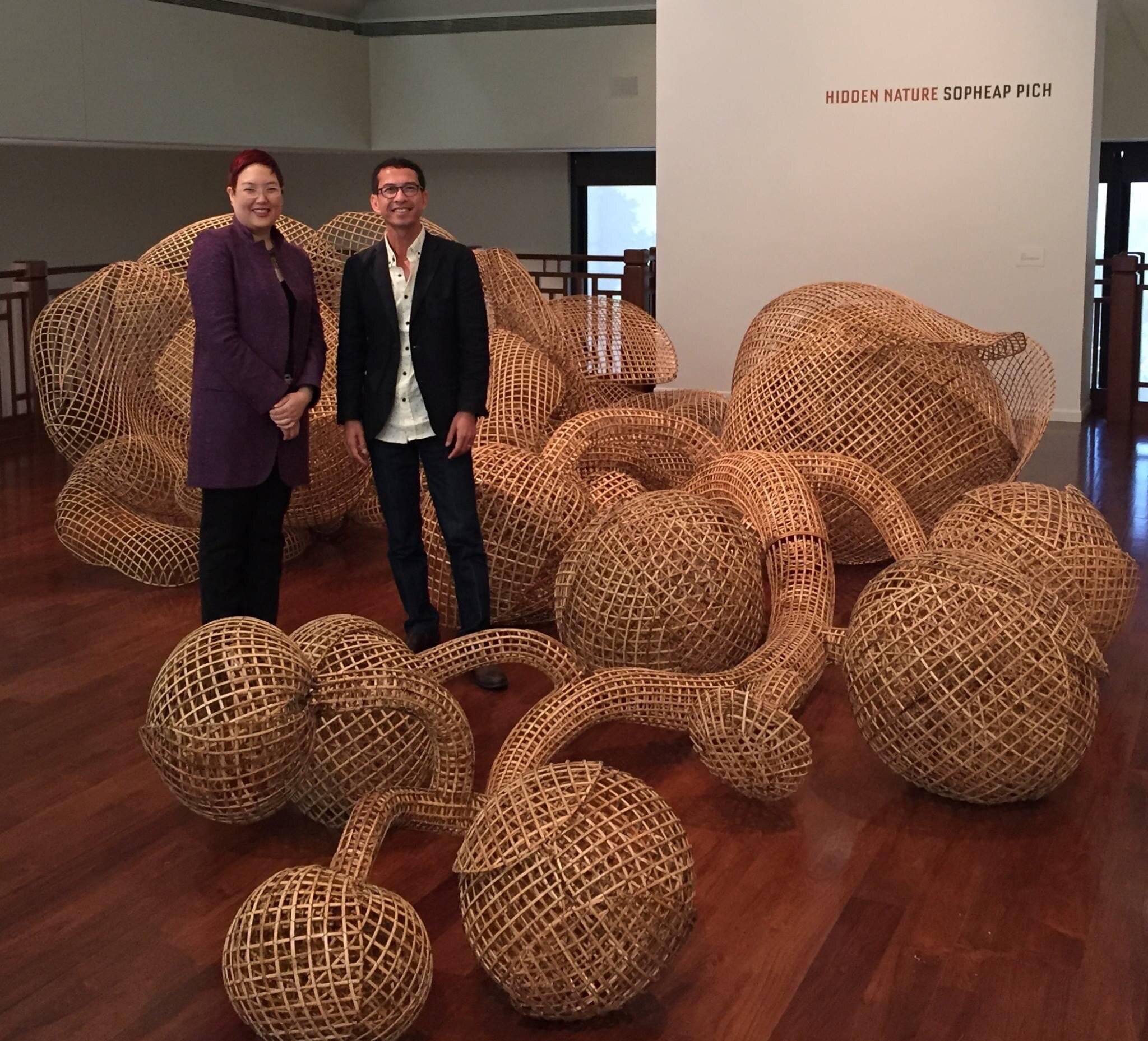
Hidden Nature: Sopheap Pich
On view June 24, 2017-January 7, 2018 at the Crow Museum of Asian Art
Phnom Penh-based artist Sopheap Pich (Cambodia; born 1971) is known for working with local materials such as bamboo, rattan, burlap from rice bags, beeswax, and earth pigments gathered from around Cambodia. He makes sculptures that are inspired by bodily organs, vegetal forms, and abstract geometric structures.
Featured in this exhibition is his large-scale sculpture Rang Phnom Flower. The sculpture, which depicts a cannonball tree (Couroupita guianensis; “rang phnom” in Khmer), is his most ambitious single-form sculptural work to date. Twenty-five feet in length, its complex construction is composed of hundreds of strands of rattan and bamboo. In Southeast Asia, the cannonball tree is revered for its physical resemblance to the sal tree under which the Buddha was born; accordingly, the tree is often planted near Buddhist temples. In fact, the plant originated in Central and South America and was introduced by Europeans to Sri Lanka. Sri Lankans then introduced it to Southeast Asia in their revitalization of Buddhism in that region.
The enormous, over-sized scale of Pich’s tree conveys the power of nature, and serves as a material mediation between representation and abstraction. He brings forward the plant’s abstract qualities by using a precise grid-like structure and geometric shapes. The sculpture is illustrative of a traditional craft medium, but its sheer size moves the work beyond the individual body and the laborious act of its creation out into nature. His sculpture suggests the relativities of artistic modernity from a global perspective, how meanings are contingent upon context, and how the large can be found within the small.
Pich’s sculpture was juxtaposed with an original rare volume by Pierre Jean François Turpin (1775-1840), Dictionnaire des Sciences Naturelles dans lequel on traite méthodiquement des differents êtres de la nature (61 vols.), written by M. Antoine-Laurent de Jussieu (1748-1836), Plates Botanique, vol. 5, Text published 1816-1845; botanical plates published 1816-1829, by F.G. Levrault, Paris, on loan from the collection of the Botanical Research Institute of Texas, Fort Worth. This Dictionnaire is a summary of the state of knowledge of the natural world that was still expanding in the early 19th century through continued exploration and colonization. Its text and hundreds of beautiful colored engravings reflect the European fascination with the natural world and with the many new plants and animals being discovered from distant places at the time, including a botanical illustration of the rang phnom flower.
Hidden Nature: Sopheap Pich is organized by the Crow Museum of Asian Art and curated by Jacqueline Chao.
Header Image: Sopheap Pich, Rang Phnom Flower, 2015. Bamboo, rattan, metal wire, plywood, steel, metal bolts. Courtesy of the artist and Tyler Rollins Fine Art, New York.
Installation photography by Chad Redmon, Courtesy of the Crow Museum of Asian Art.





